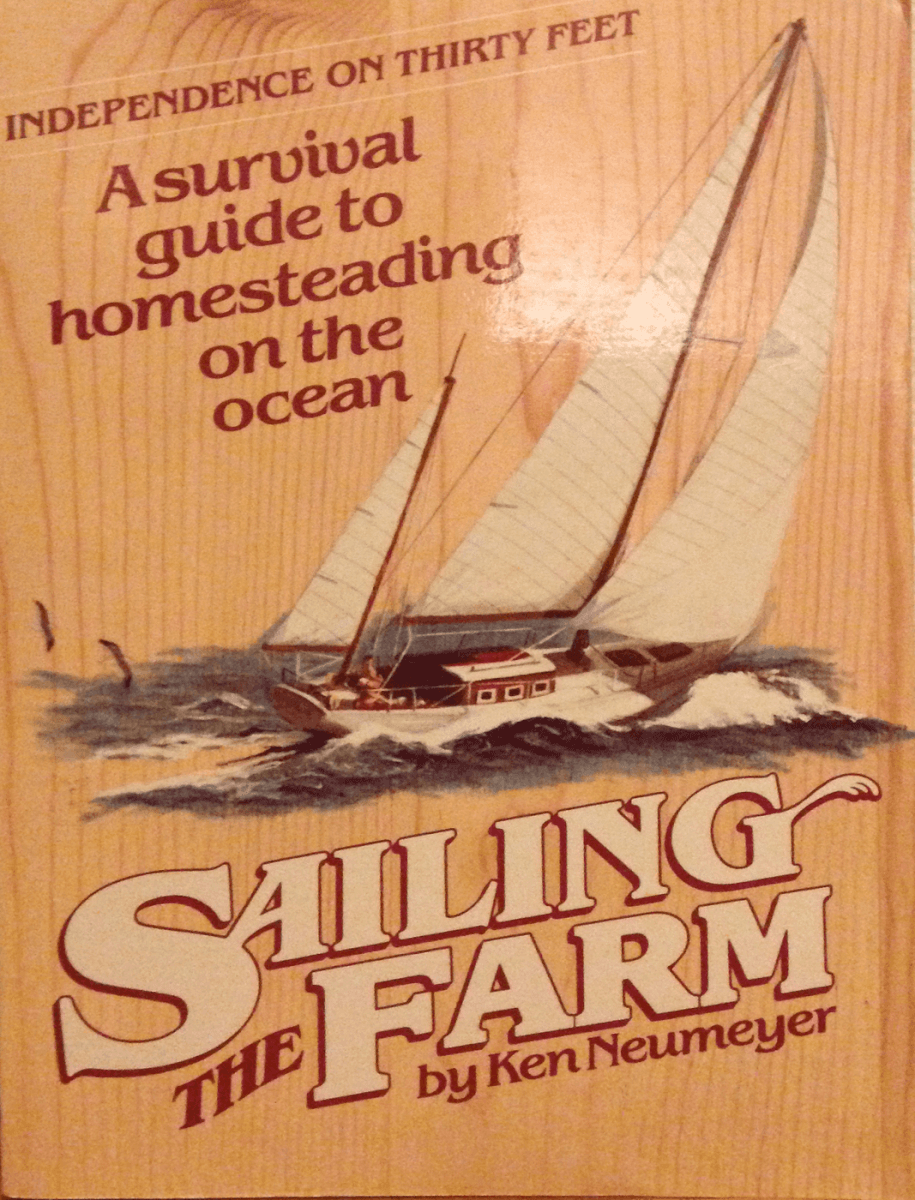What young man hasn’t seen a pirate movie and dreamed of the freedom and independence implicit in a life lived on the open sea? Like Robert Redford in “All is Lost,” how many men of a certain age have yearned to be able to abandon all the responsibilities of modern life and travel to a place where the only thing they concern themselves with is the ultimate necessities of day-to-day survival?
In 1981, Ken Neumeyer was 28 and wrote Sailing the Farm. At that time he had already logged thousands of miles and years of solo sailing.
He had owned and lived aboard a 30-foot sailboat at 18, sailing the Caribbean honing his skills and learning what was needed and what he could live without. Experimenting with different and new technologies, with the ultimate goal of being completely self-sufficient. He did this before the term “off the grid” was in common usage.
In the introduction to Sailing the Farm, Neumeyer talks of the small sloop his father bought when he was 15 and how the weekend cruises with friends and family forever altered his outlook on life and led to his dream. He owned three boats over the next decade, culminating in the steel-hulled “La Lionesse” which foundered on a jagged reef early one foggy morning. For years after that, his next boat was just a plan bouncing around in his head, a dream of the ultimate floating homestead. That led to the writing of this book. Unfortunately, Neumeyer was never able to fulfill his dream, because shortly after the publication of Sailing the Farm, he was involved in a tragic accident when a boat fell from its trailer and landed atop his car. His injuries required extensive rehabilitation, and he was never able to sail solo again. He died in 2013.
But I don’t sail, you say? If you have any interest in a self-sufficient, off-the-grid lifestyle, then I highly recommend adding this book to your survival library. The book is really a homesteading guide. The first three chapters deal with the specifics of living in a tiny ocean-going travel trailer. With details on building a desalinating water purifier, solar food dehydrators, and other shipboard living necessities, these chapters are the DIY portion of the book. Chapter two, for example, covers shipboard finances and is really just a primer on how to become an ocean-going itinerate tinker/trader. Chapters four through eight are more specifically about food and how to grow it and store it in the limited space available shipboard. Chapter nine includes recipes to make the sometimes bland ingredients necessitated by limited storage space and high-calorie content palatable.
Though technology has come a long way in the almost 40 years since Neumeyer wrote the book, the principles of survival on an ocean-going homestead remain the same. If you can’t afford to equip your floating retreat with all the latest and greatest gear, you could do far worse than following the lead of a young man who planned to live a nomadic seafarer’s life before that gear had been developed.
Editor’s note: A version of this article first appeared in the November 2015 print issue of American Survival Guide.


